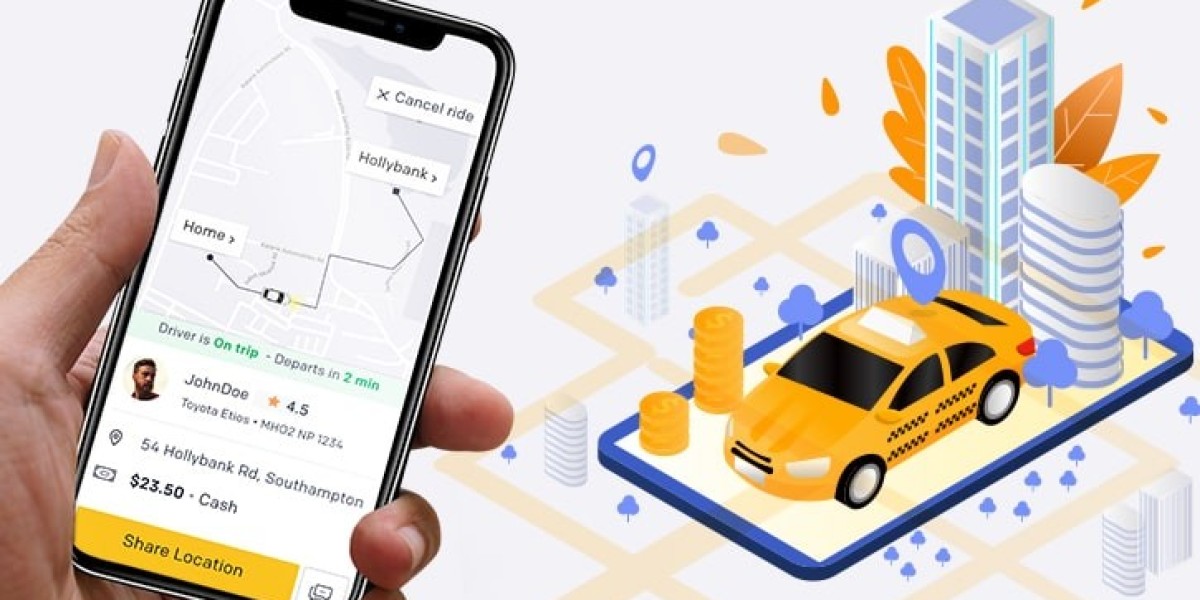In the fast-paced world of digital transportation, taxi booking apps have revolutionized how people move from point A to point B. With the massive success of platforms like Uber, Lyft, and Ola, entrepreneurs and startups are increasingly investing in taxi booking app development to enter the booming ride-hailing market.
But behind every successful taxi app is a carefully planned revenue model—the financial blueprint that ensures long-term growth and profitability. Whether you're building a new ride sharing app or improving an existing one, understanding how these apps generate revenue is essential.
In this article, we’ll explore the top revenue models for taxi booking apps, helping you choose the right monetization strategy for your business.
? 1. Commission-Based Model
This is the most common and widely adopted revenue model in the taxi app ecosystem. In this model, the platform charges a percentage-based commission on each ride completed through the app.
How it works: The driver earns the fare, but a portion (usually 10–30%) goes to the app owner.
Example: Uber and Lyft both follow this model.
Benefits:
Scales with usage
Steady cash flow
Encourages platform growth
? 2. Subscription Model
This model allows drivers to pay a weekly or monthly subscription fee to use the app. Instead of charging a commission per ride, drivers retain full fare earnings.
How it works: Drivers pay a flat rate to access platform features and accept bookings.
Best for: Markets with high competition or where drivers prefer consistent costs.
Benefits:
Predictable revenue
More driver loyalty
Suitable for high-volume drivers
? 3. Freemium Model + Premium Features
This hybrid model offers basic services for free while charging for advanced features. It’s great for growing user bases and upselling later.
Premium offerings may include:
Priority bookings
Driver analytics
In-app advertising removal
Benefits:
Attracts a large user base
Encourages paid upgrades over time
? 4. In-App Advertising
Allowing third-party ads in your app can generate significant revenue—especially as your user base grows.
Types of ads:
Banner ads
Interstitial ads
Sponsored ride offers (e.g., discounted rides in exchange for watching an ad)
Benefits:
Passive income stream
Can be integrated alongside other models
?️ 5. Corporate Partnerships
Some taxi apps partner with hotels, travel agencies, or corporate businesses to offer dedicated transportation services.
How it works: Companies pay a fixed fee or subscription to offer ride services to clients or employees.
Bonus: Helps expand your network of repeat users.
Benefits:
Higher volume bookings
Reliable client base
Good for B2B growth
? 6. Surge Pricing or Dynamic Pricing
This model adjusts fare prices based on demand, weather, location, or event timings. It increases revenue during high-demand periods while managing rider-to-driver balance.
Key benefit: Maximizes profit during peak hours
Challenge: Must be transparent to avoid user backlash
? 7. Franchise Model
In this model, you allow other entrepreneurs to launch your taxi service brand in different cities or regions, earning a share of their profits or a fixed licensing fee.
Benefits:
Rapid geographical expansion
Shared operational risk
? 8. Affiliate Marketing
You can earn commissions by promoting partner services within your app (e.g., insurance, food delivery, or car maintenance).
Use case examples:
Promote vehicle servicing businesses to your drivers
Cross-sell travel insurance to riders
? Choosing the Right Tech for Monetization
To implement any of these models, your app’s backend must be flexible, secure, and scalable. Many startups choose React Native services to build fast, cross-platform apps that support advanced features like real-time tracking, push notifications, and integrated payment gateways.
React Native not only reduces development time and cost but also ensures a seamless user experience across both Android and iOS.
? Final Thoughts
Your revenue model plays a key role in shaping your business strategy, growth potential, and long-term profitability. Whether you're opting for commission-based earnings, subscriptions, or corporate tie-ups, your app must be built to support those financial strategies from day one.
By understanding and applying the right revenue model—and partnering with experts in taxi booking app development—you can position your ride sharing app for success in 2025 and beyond.








